The Xiaomi Mi Note Pro and Mi Note Review
by Joshua Ho on September 11, 2015 9:00 AM ESTSystem Performance Cont'd
Now that we've gone over some of the more CPU-bound benchmarks for overall performance, we can look at some of the more GPU-bound benchmarks such as 3DMark, Basemark X, and GFXBench 3. Of course, it's important to note that we're actively in the process of migrating to newer GPU benchmarks so for now these benchmarks are really mostly representative of OpenGL ES 3 performance rather than 3.1.
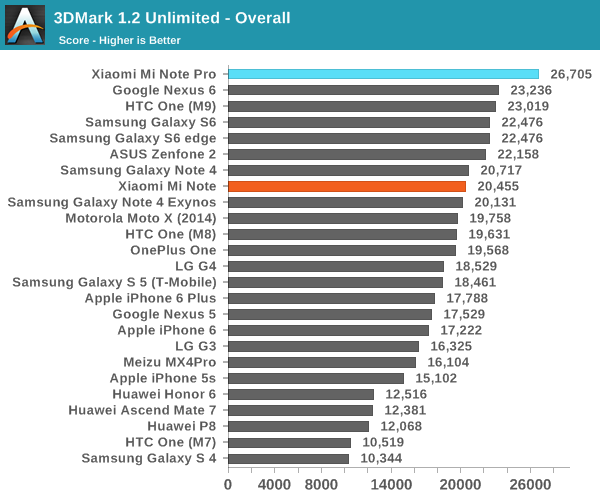
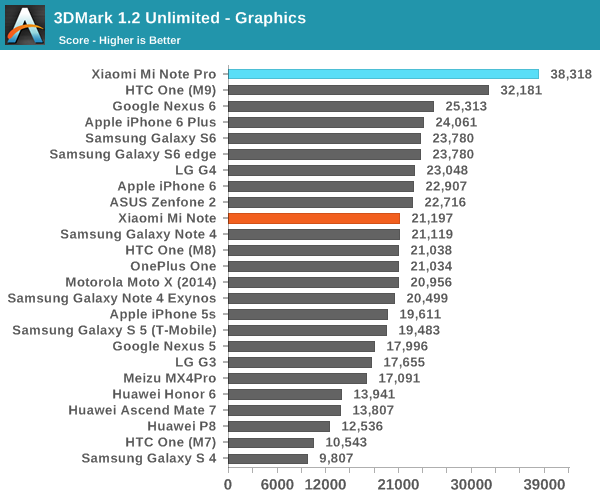
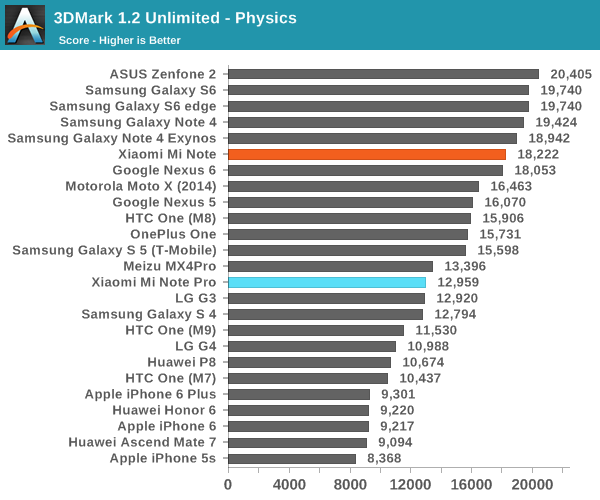

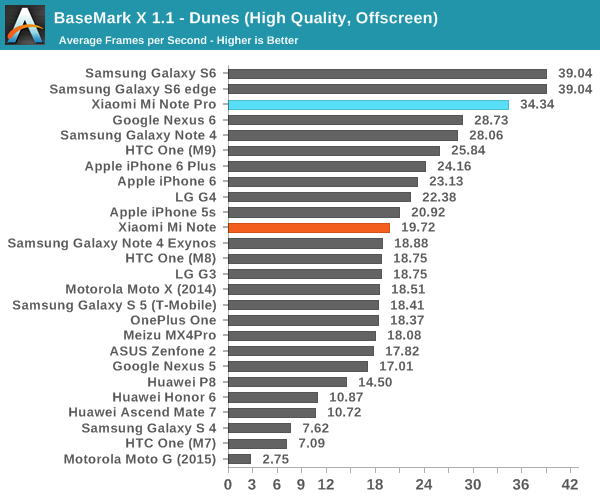

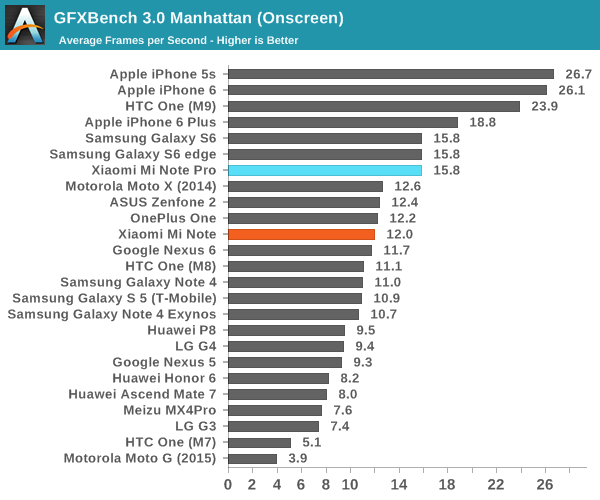
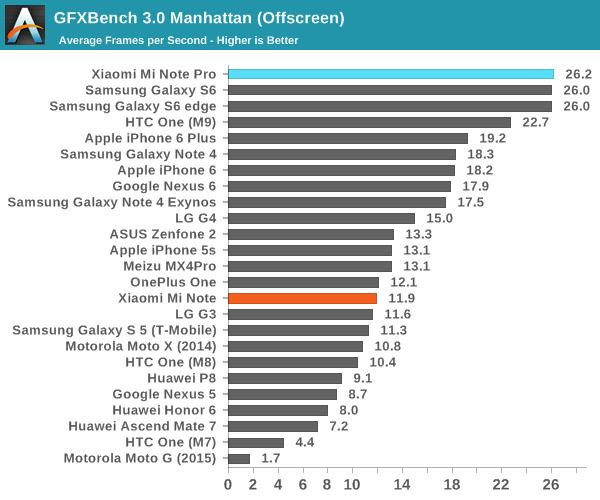
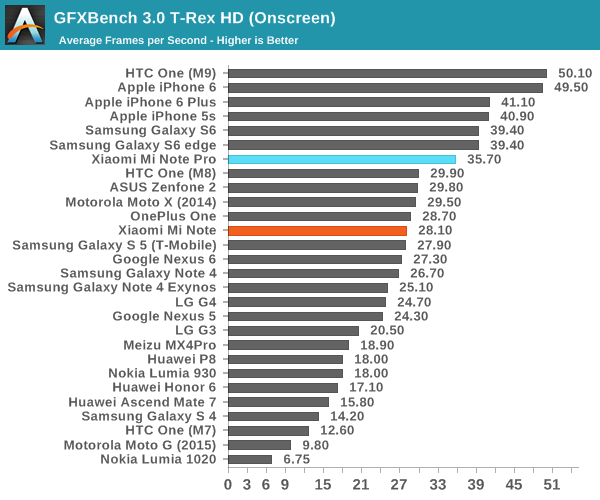
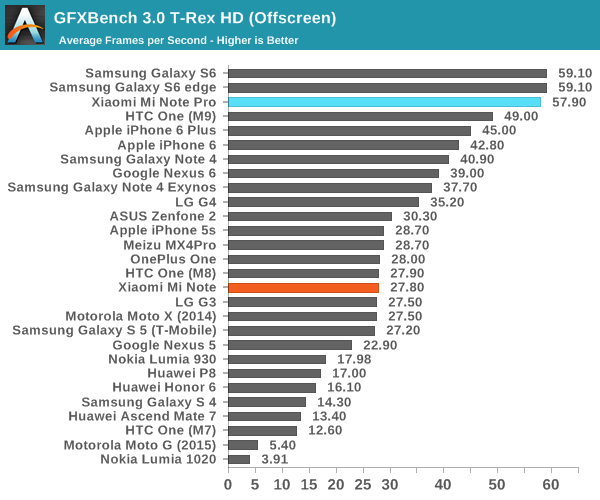
Interestingly, the GPU benchmark results show a pretty noticeable change relative to what we saw out of the One M9 at the launch of the first Snapdragon 810 phones. It's clear that some sort of driver optimization has been implemented as in every benchmark we see performance improvements well north of 5% that would be seen from purely clock speed gains. This highlights just how volatile GPU performance can be as Adreno 430 is now roughly equivalent to the T760MP8 in GFXBench and 3DMark. However, we still see the Adreno 430 lagging behind in Basemark X, which suggests the architecture of the Adreno 430 is a limiting factor in some workloads.
NAND Performance
While it’s often easy to forget about internal storage outside of capacity, it turns out that good storage performance is critical for a number of general purpose computing tasks. Mobile OSes aren’t necessarily as affected by storage performance as a desktop or laptop that is caching parts of RAM on internal storage, but even so it’s definitely possible to see the problems that result from cutting too deep here. Probably the most well-known example of this sort of cutting was the original Nexus 7 in 2012, which suffered from severe issues due to a lack of TRIM and general poor performance. In order to test mobile devices for this sort of problem, we use our standard benchmarks for testing basic read and write performance of the internal storage solution. In the case of the Xiaomi Mi Note Pro, we see a Samsung CGND3R eMMC package, while the Xiaomi Mi Note uses Toshiba’s 016GE2 eMMC solution.
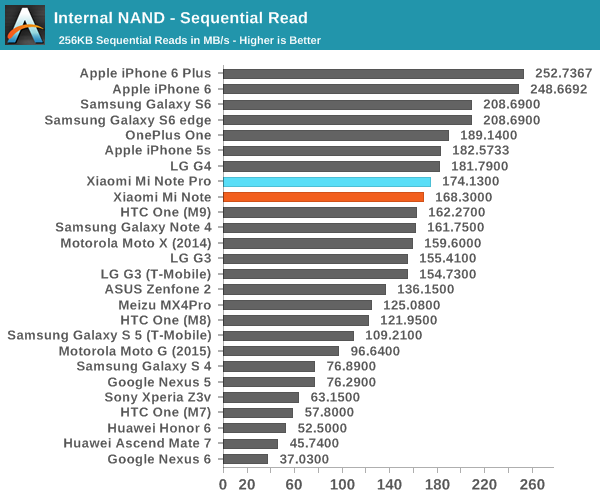
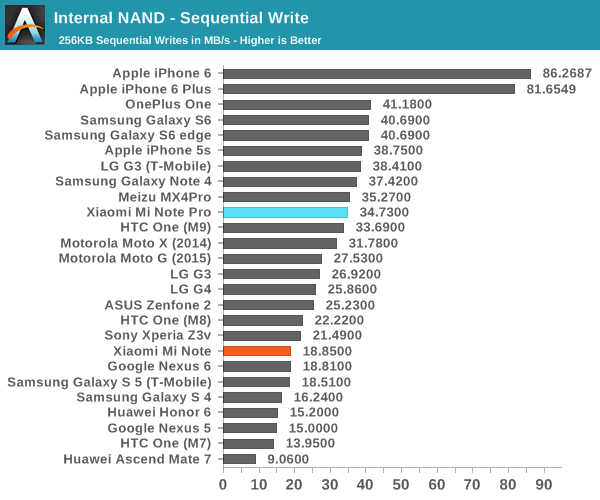
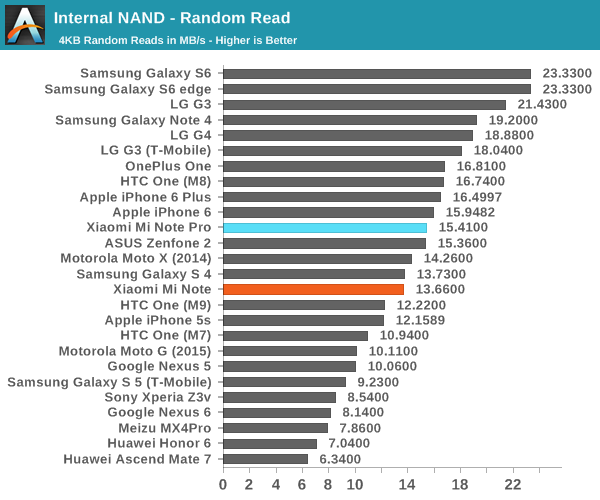
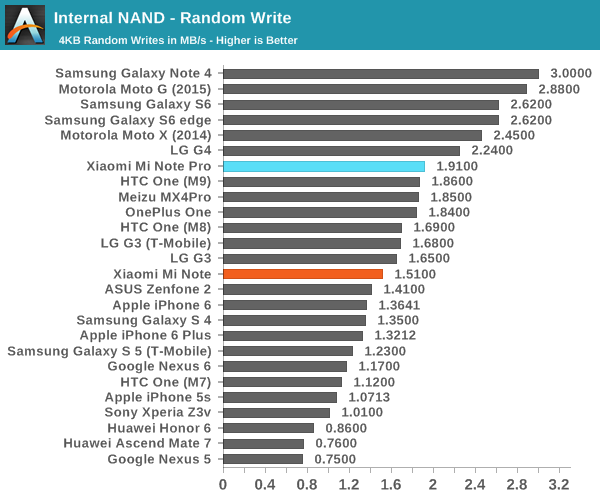
In practice, neither has incredible performance, but performance is far from poor here. For the most part, the user experience effects on storage performance will be somewhat hard to notice as sufficient storage performance means that the bottleneck for any kind of lag or stutter would be elsewhere in most applications.










94 Comments
View All Comments
AussieinUS - Monday, September 14, 2015 - link
FYI my Note works in the USA and Canada with my US T-Mobile account. No LTE but HSPA and 3G. The same speeds that I got in Italy where it was purchased. The Bands in the Note is missing for LTE at least in the version I have. I think 1700. Also the slowness to update from Kitkat is a limitation. Overall a great phone and well priced.johnny_boy - Saturday, September 12, 2015 - link
Android 4.4 KitKat? Really? I wouldn't even consider the Note because of this. I have the Honor 6 and it's taking ages for them to bring their first OS update ever to the phone: apparently we got Lollipop late this month, around the time Marshmallow comes out! Definitely the last phone I buy from Huawei.realbabilu - Tuesday, September 15, 2015 - link
don't worry. They re updating the firmware fast. you can choose nightly every week update.I have oneplus that came with Lollipop CM12s still has the 3 stagefreight bugs, Xiaomi miui patched them fast with kitkat firmware.
The Lollipop Cm12s Oneplus is killing batteries faster than Kitkat Cm11s
vision33r - Sunday, September 13, 2015 - link
Note 5 and S6 Edge Plus reviews are everywhere. I've checked them out and they are super fast, I've never used an Android device that smooth and fast before. I definitely think those are the phones to beat in 2015. However I don't want them because like the iPhone 6 they are due to get refreshed next year when Samsung can finally figure out how to get microSD working. I can do without battery swap but I need ext storage.Yaru - Sunday, October 4, 2015 - link
I doubt Samsung will bring back MicroSD storage. They're targeting the high end premium market with those phones and they rather charge you extra money for extra internal storage like Apple does.NXTwoThou - Tuesday, September 15, 2015 - link
*crosses fingers that WM10 will be available for it or its successor*JimmiG - Wednesday, September 16, 2015 - link
Part of the difference in battery life can also be explained by Android 5.0 vs 4.4.4, since KitKat has superior battery life over Lollipop.hasseb64 - Monday, September 21, 2015 - link
Chinese hardware and STASI software, your personal info is SOLD at least two times...ntgeralt - Wednesday, September 23, 2015 - link
Tell you someting you don't know:In permissions management system, It will automatically scan all your files background and "tell" you how much crash you need to clean.And XiaoMi UI will give you ads push everyweek,you can't find anyplace to turn it off.
The last thing is google it: "XiaoMi backdoor".
pintin - Wednesday, September 30, 2015 - link
Yes.An important reason for the unexpected success of the company Xiaomi were designed both hardware and firmware that runs on the open source software of Android. Xiaomi MIUI interface of speed and design equivalent to the operating system of the iPhone or the Samsung's high-end products but with only half the price. Most Android phone vendors are dependent on similar designs by the third party manufacturers like Foxconn provide.